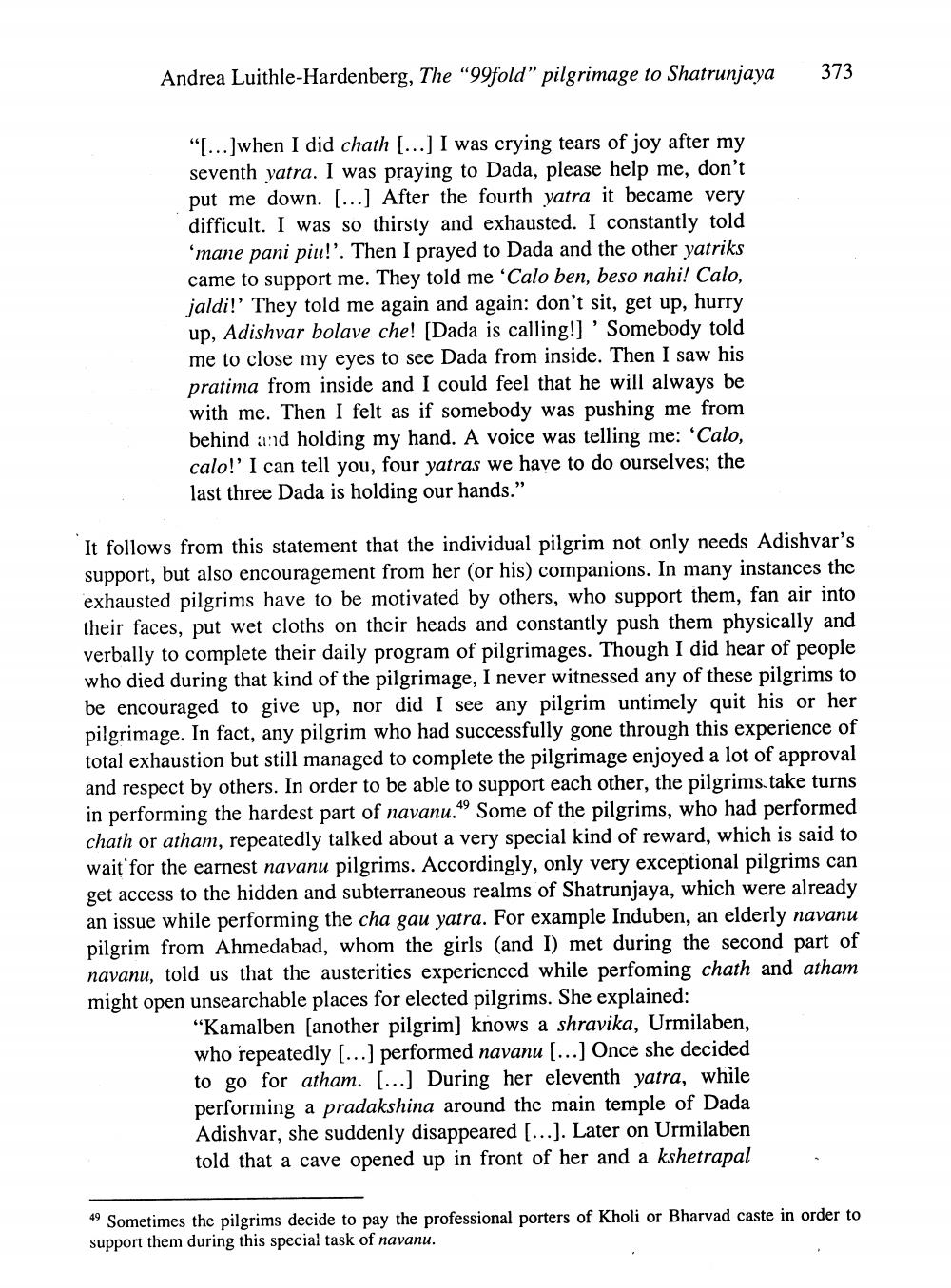________________
Andrea Luithle-Hardenberg, The “99fold” pilgrimage to Shatrunjaya
373
“[...]when I did chath [...] I was crying tears of joy after my seventh yatra. I was praying to Dada, please help me, don't put me down. [...] After the fourth yatra it became very difficult. I was so thirsty and exhausted. I constantly told 'mane pani piu!'. Then I prayed to Dada and the other yatriks came to support me. They told me 'Calo ben, beso nahi! Calo, jaldi!' They told me again and again: don't sit, get up, hurry up, Adishvar bolave che! [Dada is calling!] 'Somebody told me to close my eyes to see Dada from inside. Then I saw his pratima from inside and I could feel that he will always be with me. Then I felt as if somebody was pushing me from behind and holding my hand. A voice was telling me: 'Calo, calo!' I can tell you, four yatras we have to do ourselves; the last three Dada is holding our hands."
It follows from this statement that the individual pilgrim not only needs Adishvar's support, but also encouragement from her (or his) companions. In many instances the exhausted pilgrims have to be motivated by others, who support them, fan air into their faces, put wet cloths on their heads and constantly push them physically and verbally to complete their daily program of pilgrimages. Though I did hear of people who died during that kind of the pilgrimage, I never witnessed any of these pilgrims to be encouraged to give up, nor did I see any pilgrim untimely quit his or her pilgrimage. In fact, any pilgrim who had successfully gone through this experience of total exhaustion but still managed to complete the pilgrimage enjoyed a lot of approval and respect by others. In order to be able to support each other, the pilgrims. take turns in performing the hardest part of navanu.“ Some of the pilgrims, who had performed chath or atham, repeatedly talked about a very special kind of reward, which is said to wait for the earnest navanu pilgrims. Accordingly, only very exceptional pilgrims can get access to the hidden and subterraneous realms of Shatrunjaya, which were already an issue while performing the cha gau yatra. For example Induben, an elderly navanu pilgrim from Ahmedabad, whom the girls (and I) met during the second part of navanu, told us that the austerities experienced while perfoming chath and atham might open unsearchable places for elected pilgrims. She explained:
“Kamalben (another pilgrim) knows a shravika, Urmilaben, who repeatedly [...] performed navanu (...) Once she decided to go for atham. [...] During her eleventh yatra, while performing a pradakshina around the main temple of Dada Adishvar, she suddenly disappeared [...]. Later on Urmilaben told that a cave opened up in front of her and a kshetrapal
49 Sometimes the pilgrims decide to pay the professional porters of Kholi or Bharvad caste in order to support them during this special task of navanu.




